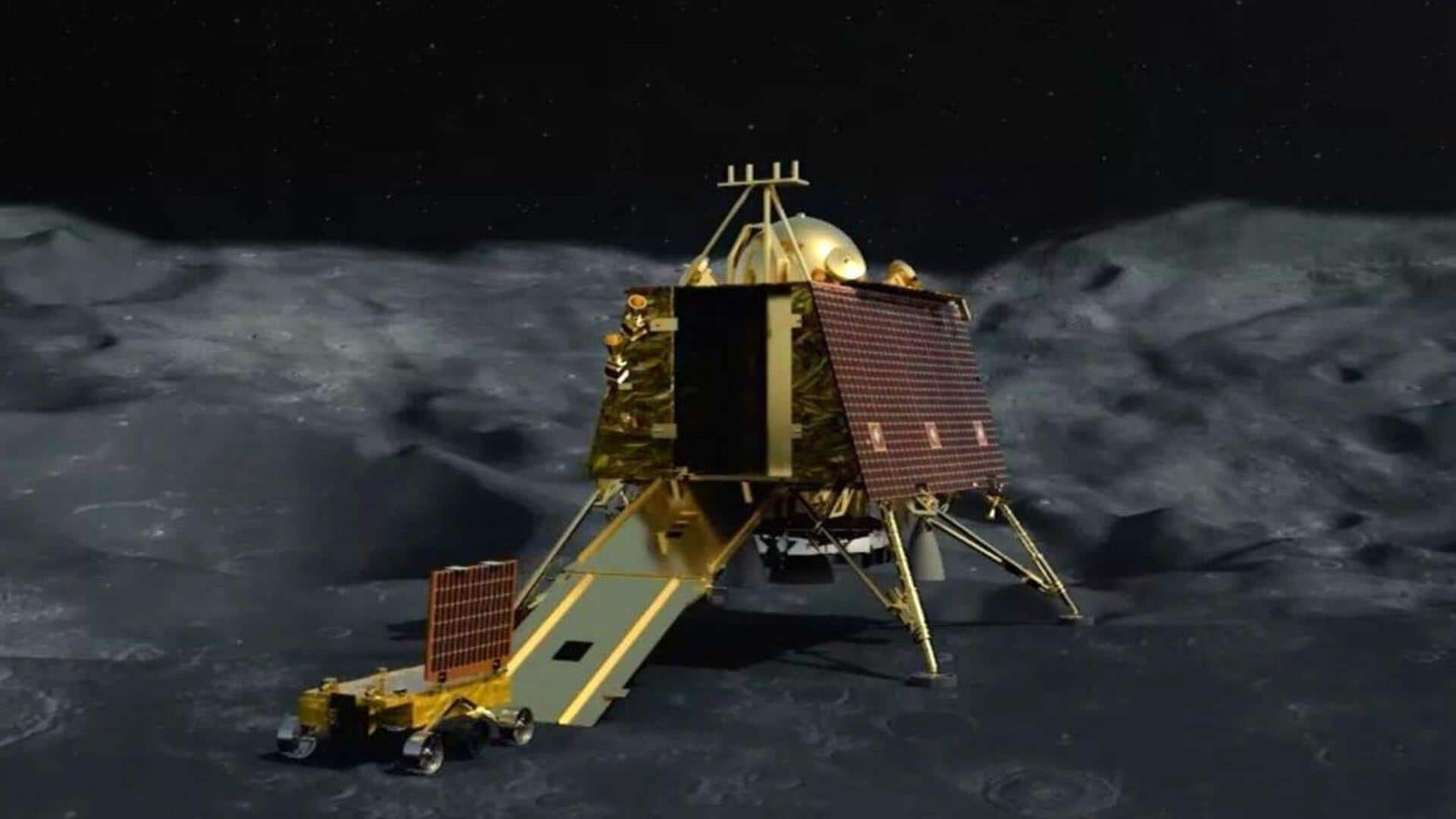
ISRO's Chandrayaan-2 reveals secrets of the Moon's polar regions
What's the story
The Indian Space Research Organisation's (ISRO) Chandrayaan-2 Orbiter has made a major breakthrough in lunar exploration. The spacecraft, which has been orbiting the Moon since 2019, has provided unprecedented insights into the polar regions of the celestial body. Scientists at ISRO's Space Applications Centre (SAC) in Ahmedabad have used data from the mission's Dual Frequency Synthetic Aperture Radar (DFSAR) to create high-resolution radar maps of these areas.
Instrument significance
DFSAR has been probing lunar surface since 2019
The DFSAR instrument, which works in both vertical and horizontal transmission and reception modes, has been instrumental in probing the surface and subsurface properties of the Moon with remarkable accuracy. Over nearly five years, some 1,400 radar datasets have been collected and processed to create detailed polarimetric mosaics, covering latitudes between 80-90 degrees in both hemispheres. This data collection marks a major milestone in lunar exploration.
Data analysis
Data provides insights into surface and subsurface properties
The SAC team has developed indigenous algorithms and advanced data products that offer key insights into the possible presence of water-ice, surface roughness variations, and dielectric properties indicating density and porosity of the lunar soil. These parameters help characterize both surface composition and hidden geological signatures beneath it. One key indicator derived from DFSAR data is the Circular Polarisation Ratio (CPR), which is sensitive to reflections from subsurface ice deposits.
Data release
Datasets now available for scientific community
The Level-3C Polar Mosaic datasets have now been released and made freely available to the scientific community. These results are important for future lunar missions as they offer first-order insights into thermal stability zones where water-ice could persist. This information can help with resource utilization and landing site selection in future missions. The findings also enhance our understanding of untouched polar environments on the Moon, which are believed to preserve some of the earliest chemical signatures of the solar system.